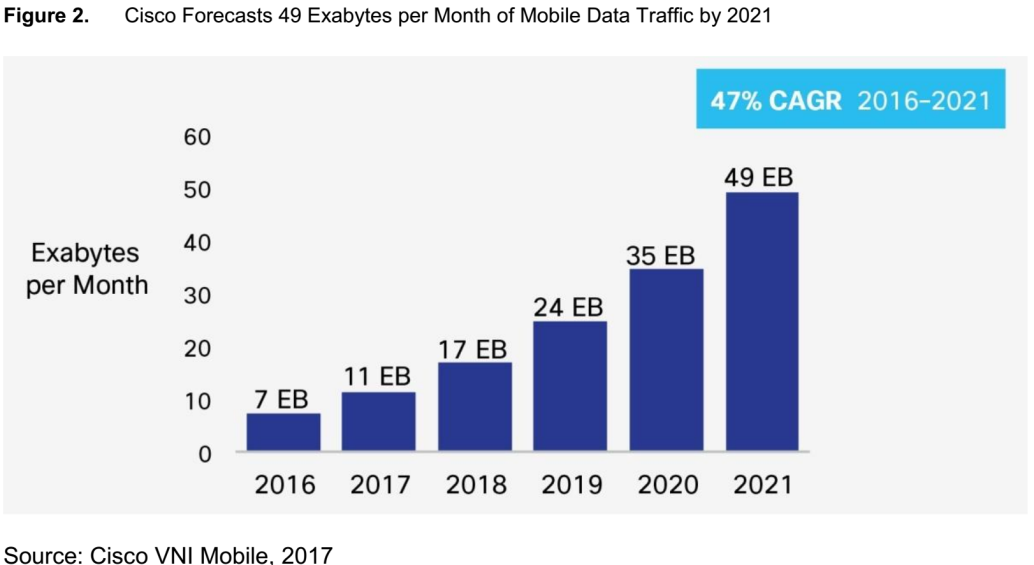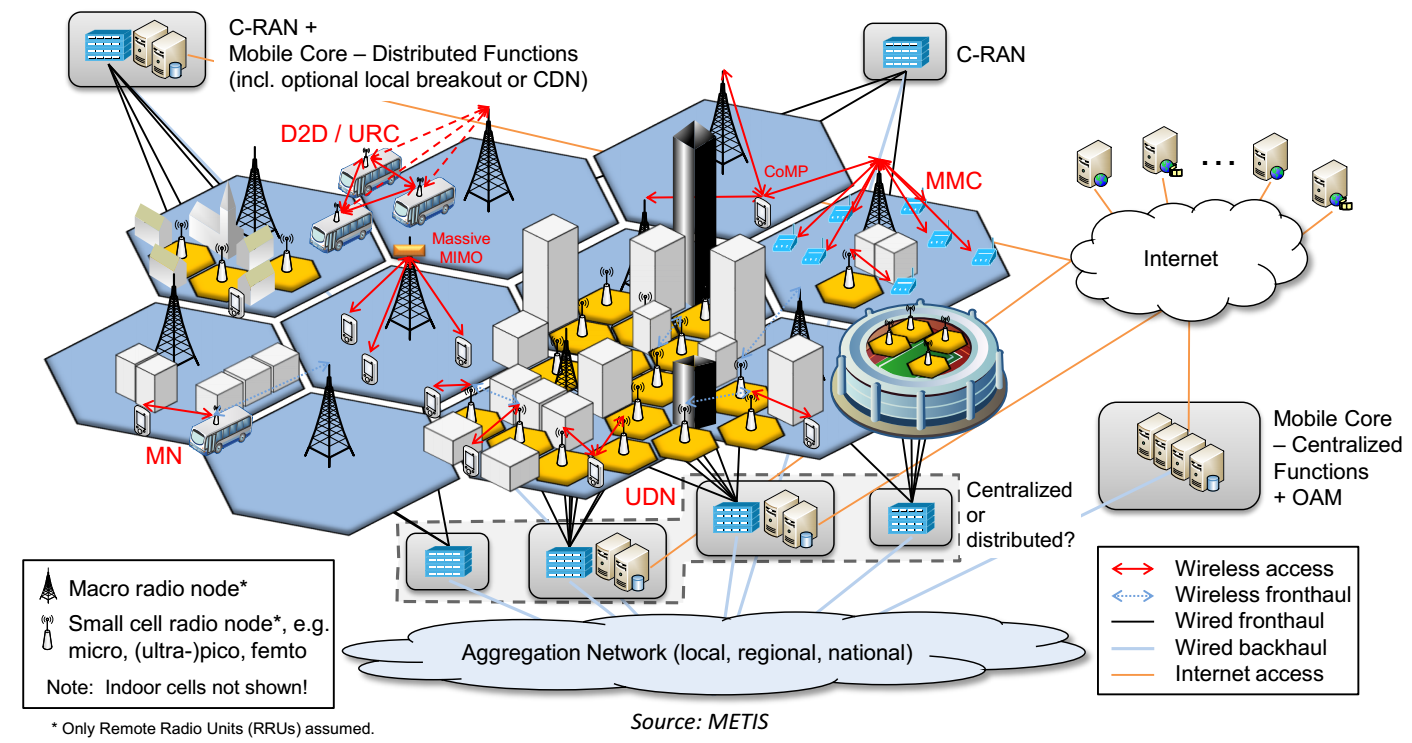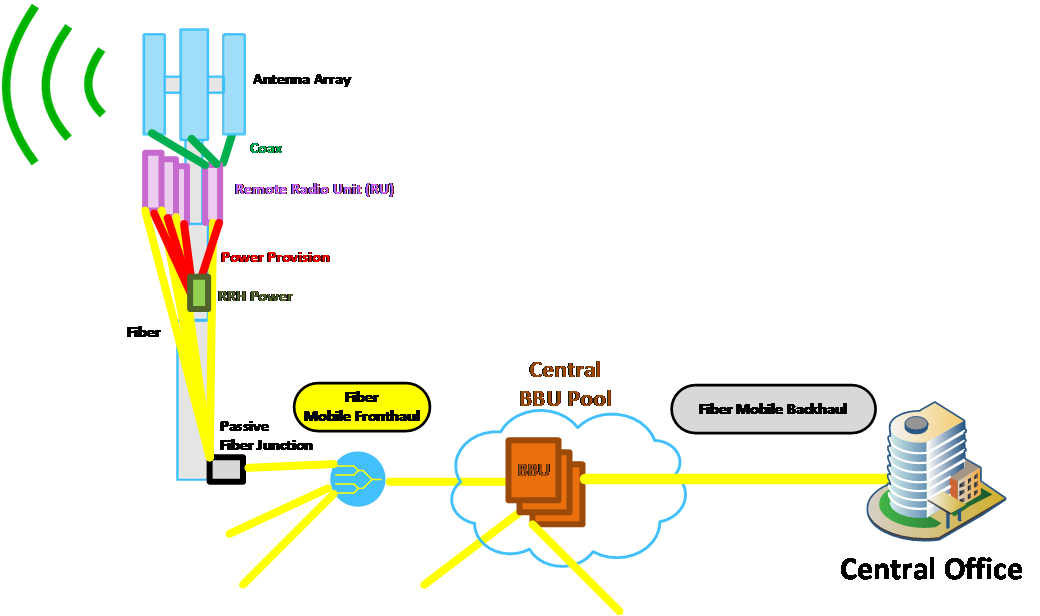Welcoming the 5G Network – and Mobile Edge Computing
Global mobile data traffic is growing much faster than fixed broadband data traffic, with a compound annual growth rate of 47% from 2016 to 2021, according to Cisco’s VNI Mobile 2017 report. Expansion of mobile-access bandwidth is being driven by the proliferation of web applications, cloud computing and content streaming (including audio, video and virtual reality).

Global monthly mobile data traffic (Source: Cisco VNI Mobile 2017 Report)
The Evolution of Mobile Networks
The mobile network system, which serves as the communications backbone for cellular phones, has changed our lives and our communication over the last 30 years. Today, smartphones don’t just support basic services like voice and SMS – they have become indispensable tools that offer millions of applications to improve work efficiency, continuously provide updated news information, keep us in contact with peers and friends, provide instant streaming of our favorite TV series and movies, take and share high-definition pictures and videos … our smartphones have become our personal assistants to complete all kind of tasks.
As a matter of fact, since the first cellular mobile network system was introduced in 1981, a new mobile generation has appeared every 10 years. These mobile-network milestones remind us of just how far we’ve come since then:
- A 1G cellular system that supported analog voice service using frequency division multiple access (FDMA) was introduced in 1982.
- A 2G GSM cellular system that supported digital voice and messaging using time division multiple access (TDMA) and code division multiple access (CDMA) was introduced in 1992.
- 3G first appeared in 2001 to support digital voice and messaging, as well as data and multimedia service; it moved us to the wideband spread-spectrum with wideband code-division multiple access (WCDMA).
- 4G/LTE (long-term evolution), our current mobile-network generation, supports IP voice and data, as well as mobile Internet service. 4G has moved to complex modulation formats with orthogonal frequency-division multiplexing (OFDM), and was first standardized and introduced in 2012.
- 5G mobile network development is already on the horizon; steps are already being taken to migrate from 4G/LTE (4G+, 4.5G and LTE Advanced, for example). 5G will use a flexible spectrum framework, with largescale, small-cell deployment and high-frequency utilization in the millimeter band to operate in licensed or unlicensed spectrum bands with shared spectrum resources. One major change in 5G: It will be built on cloud radio access network (C-RAN) architecture.

5G architecture (Source: METIS)
5G Networks: Features and Challenges
5G networks will support growing data rates, more terminals, higher service availability, better mobility and enhanced network coverage.
Wireless access points will also be used to offload 5G traffic. As shown above, large numbers of distributed antenna systems (DASs) will be implemented indoors and outdoors for carrier Wi-Fi, small cells, HetNet, DAS networks and self-organizing networks.

5G network service requirements
Main Features of 5G Network Infrastructure
As we get ready to welcome the 5G mobile network, there are some key features to know about:
- There will be an increase in required throughput with a guaranteed data rate that is equal to or greater than 50 Mbps.
- It will offer continued growth in terms of wireless capacity, coverage, mobility support, service availability and reduction in latency equal to or less than 5 ms.
- The Sub-6 GHz spectrum and millimeter wave (28 GHz, 38 GHz, 60 GHz and 72-73 GHz, for example) will be used for indoor and outdoor wireless communication scenarios.
- There will be a greater use of sites for multiple radio solutions (i.e. 4G, Wi-Fi and 5G).
- Massive MIMO (multiple-input and multiple-output) with very large numbers of antennas to serve multiple users in much denser networks with small cells (e.g. microcells, picocells and femtocells).
- Resource centralization (central baseband unit [BBU] pool, as shown below) with efficient resource management and sharing. In addition, baseband signal processing will be enabled by hardware in a centralized location.
- The fiber mobile fronthaul will interconnect the BBU in the centralized location to the remote radio head (RRU) for a reach of up to 20 km with a bandwidth increase of 10 times or more.
- Software-defined network (SDN) and network function virtualization (NFV) architecture will enable flexible networking and eliminate the need for dedicated hardware for each network function.

5G centralized BBU location and mobile fronthaul
The Pivotal Role of Mobile Edge Computing in 5G Networks
Cloud computing is transforming Internet content storage, access and caching. Many emerging applications (such as the Industrial Internet of Things [IIoT], smart cities, healthcare and driverless vehicles) are very latency sensitive and require local computing storage capacity.
As a proactive content caching approach at the edge to distribute content, mobile edge computing (MEC) processes applications closer to the users. With a goal of reducing network congestion, MEC will play a pivotal role in the 5G network as an edge computing platform. (MEC may also be called MiniCloud, Cloudlet, Mobile Edge Cloud or Fog Computing.)
By using lots of NFV infrastructure to create a small cloud at the edge, the benefits of MEC are very obvious. They include:
- Rather than backhauling traffic generated by applications to a remote data center, MEC allows operators to provide interactive experiences with real-time applications that run at the edge of their networks.
- MEC extends cloud functionality to locate application execution close to or at the edge of the mobile network (e.g. base station) and dramatically reduce the amount of time it takes to access and run the application.
- C-RAN is adopting a similar concept in cloud data centers, as it leverages base station radio and radio unit resources with SDN/NFV architecture.
- Together with traditional telco operators like AT&T and Verizon, IT giants like Facebook and Google are already entering the 5G infrastructure buildouts and services market. 5G development will enhance mobile broadband so it can support high-data-rate Internet access, augmented reality and cloud storage.

Mobile edge computing platform (Source: ETSI)
The European Telecommunications Standards Institute (ETSI) is currently working on the development of an MEC standard under an Industry Specification Group (ISG), with a goal of allowing efficient and seamless integration of applications from different equipment vendors, telco service providers, over-the-top (OTT) service providers and third parties.
Belden can help you understand and prepare for the changes that the 5G network will bring to your organization – as well as for the addition of more wireless access points to your network. Contact us for more information.
